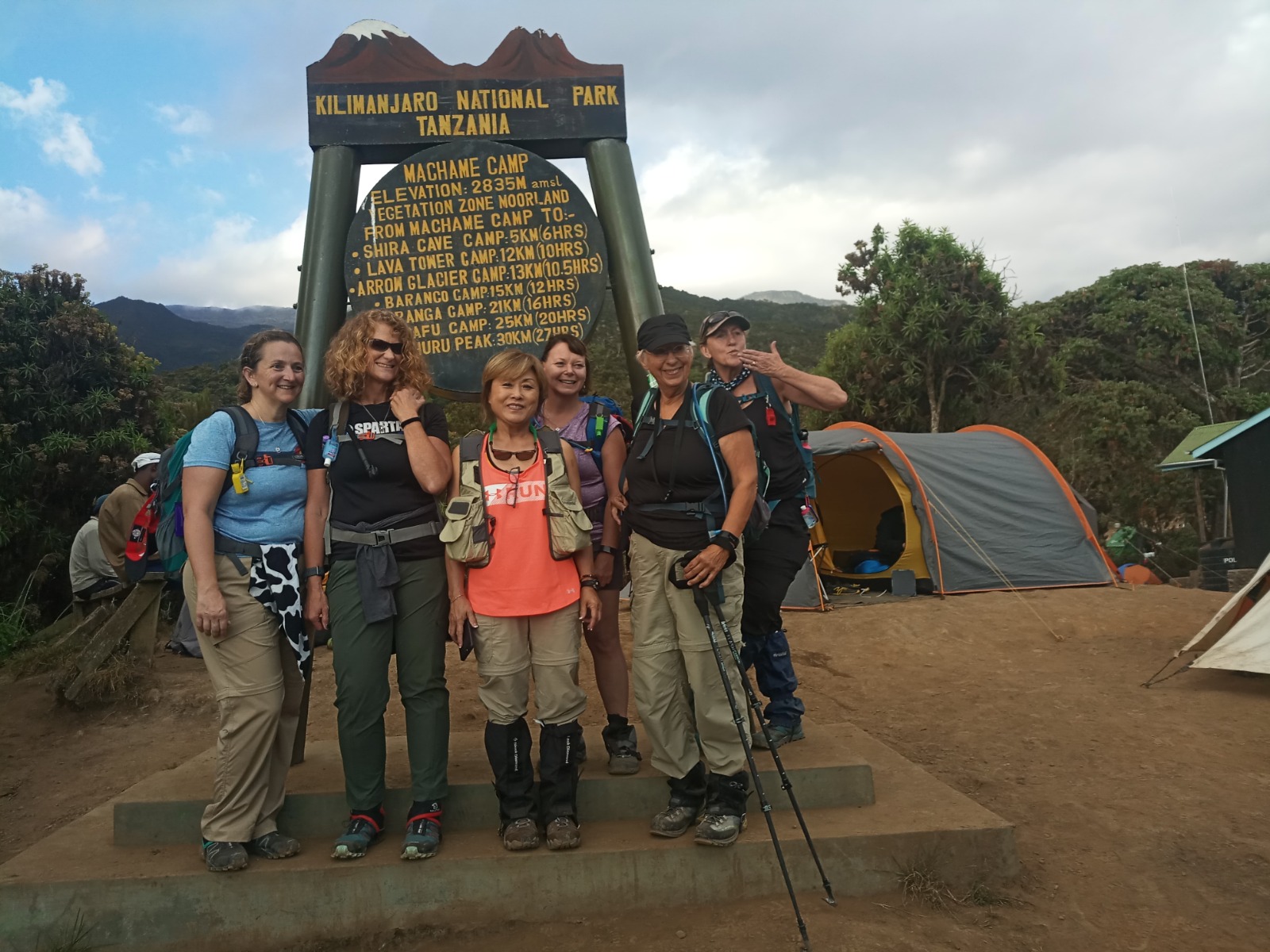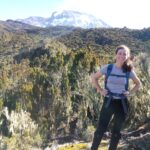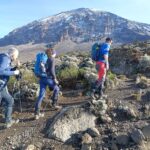Climbing Mount Kilimanjaro, Africa’s highest peak, is an unforgettable adventure. One of the most crucial factors to consider when planning your journey to the summit is the timing. Understanding the best time to climb Kilimanjaro can make the difference between a successful summit and a challenging experience. In this guide, we’ll help you determine the perfect season to conquer Kilimanjaro by examining the weather, pros and cons of each season, and other essential factors.
Kilimanjaro’s Climbing Seasons: A Quick Overview
Kilimanjaro’s weather is influenced by two distinct rainy seasons and two dry seasons. Each season presents its unique challenges and advantages, impacting your chances of a successful summit. Here’s a breakdown of the four key seasons
January to March – Warm and Relatively Dry
This period is one of the best times to climb Kilimanjaro. January to March falls between the short rainy season and the longer rains, offering relatively mild weather conditions.
Pros:
- Warmer temperatures, especially on the lower slopes.
- Clear skies with beautiful views, particularly in the mornings.
- Fewer crowds compared to the peak season.
Cons:
- Slightly more rain showers than the June to October dry season.
- Snow can start accumulating at higher altitudes, making the summit colder.
Best For: Climbers who prefer warmer conditions and want to avoid crowds.
April to May – Long Rainy Season
April and May are considered the rainy season on Kilimanjaro. The mountain experiences heavy rain showers, particularly on the southern slopes, making the trails slippery and challenging.
Pros:
- Fewer people on the mountain, offering a more secluded experience.
- Lush and vibrant vegetation on the lower slopes, creating stunning scenery.
Cons:
- Heavy rains make the trails muddy and more difficult to navigate.
- Cloud cover often obstructs the scenic views.
- Higher risk of altitude sickness due to rapid weather changes.
Best For: Experienced climbers seeking a quieter and more challenging climb.
June to October – Peak Dry Season
The most popular time to climb Kilimanjaro is from June to October. This period falls during the dry season, offering stable weather and excellent climbing conditions.
Pros:
- Dry and stable weather with fewer chances of rain.
- Clear skies with stunning views of the landscapes.
- The best chance for a successful summit due to consistent conditions.
Cons:
- The busiest time on the mountain, with more climbers on the routes.
- Colder temperatures, especially at higher altitudes.
Best For: First-time climbers and those who prefer the most reliable weather.
- November to December – Short Rainy Season
November brings the short rains, which typically last until early December. The showers are lighter compared to the long rains, and they usually occur in the afternoons.
Pros:
- Fewer climbers compared to the peak season, offering a more tranquil experience.
- A chance to see the lush vegetation rejuvenated by the rains.
- Often, clear mornings with rain primarily in the afternoons.
Cons:
- Unpredictable weather with occasional heavy showers.
- Trails can become muddy and slippery, especially on the southern routes.
Best For: Those looking for a balance between seclusion and relatively good weather.
Understanding Kilimanjaro’s Climate Zones
Mount Kilimanjaro’s unique location close to the Equator gives it diverse climate zones. As you ascend, you’ll move through five distinct zones, each with different weather patterns:
- Cultivation Zone (800 – 1,800 meters): Warm and humid, with lush farmlands.
- Rainforest Zone (1,800 – 2,800 meters): Lush, dense forest with occasional rain, especially during the rainy seasons.
- Heath and Moorland Zone (2,800 – 4,000 meters): Cooler temperatures with open terrain and giant heathers.
- Alpine Desert Zone (4,000 – 5,000 meters): Very dry, with intense sunlight and cold nights.
- Arctic Zone (5,000+ meters): Icy and freezing conditions with little to no vegetation.
The weather conditions change dramatically as you ascend, with nighttime temperatures often dropping below freezing above 4,000 meters. Knowing what to expect in each zone helps in choosing the best season to climb.
Comparing Kilimanjaro’s Climbing Routes by Season
Choosing the right route is essential for a successful climb, and certain routes are more suitable during specific seasons. Here’s a quick guide to Kilimanjaro’s popular routes and the best time to tackle them
- Machame Route: Ideal from June to October and January to March for stunning scenery and good acclimatization.
- Marangu Route: Popular year-round, but best avoided during the rainy months (April and May) due to its muddy trails.
- Lemosho Route: A versatile route great for June to October and January to March, offering excellent acclimatization.
- Rongai Route: The best route for the rainy season (April, May, November) because it’s on the northern, drier side of the mountain.
- Northern Circuit: Suitable year-round, with high success rates due to excellent acclimatization profiles.
Factors to Consider When Choosing the Best Time to Climb Kilimanjaro
When planning your climb, consider these additional factors
Crowd Levels
- Peak Season (June to October): High traffic on popular routes like Machame and Marangu.
- Off-Peak Season (April, May, November): Quieter trails with fewer climbers.
Weather Conditions
- Dry Season: More stable and predictable weather, increasing your chances of a successful summit.
- Rainy Season: Less predictable weather with a chance of rain, mud, and cloud cover.
Temperature
- January to March: Warmer temperatures, especially on the lower slopes.
- June to October: Cooler overall, with freezing temperatures at night above 4,000 meters
Preparing for Your Kilimanjaro Climb
Regardless of the season, preparation is key to a successful Kilimanjaro climb. Here are some essential tips:
- Acclimatization: Choose a longer route with good acclimatization to increase your chances of reaching the summit.
- Proper Gear: Bring layers, waterproof clothing, and quality hiking boots. Weather can change rapidly, so be prepared for all conditions.
- Fitness: Train in advance, focusing on cardiovascular fitness, endurance, and strength.
- Hydration and Nutrition: Drink plenty of water and maintain a balanced diet before and during the climb.
- Choose a Reputable Guide: Select a licensed, experienced guiding company to ensure safety, comfort, and support throughout your journey.
FAQs: Best Time to Climb Kilimanjaro
Is it possible to climb Kilimanjaro in the rainy season?
Yes, it’s possible, but it’s more challenging. Routes like the Rongai Route are recommended for the rainy season due to drier conditions on the northern side.
How cold does it get on Kilimanjaro?
Temperatures can drop to -20°C (-4°F) at the summit during the night, especially in the dry season. Be prepared with warm layers.
When is the best time for a quiet Kilimanjaro experience?
April, May, and November are the quietest months due to the rainy season, offering a more private trekking experience.
Timing Your Kilimanjaro Adventure
Choosing the right time to climb Kilimanjaro is crucial for a safe and successful summit. Whether you prefer the reliable weather of the dry season or the solitude of the rainy months, understanding the pros and cons of each season will help you plan the perfect adventure. Regardless of when you go, proper preparation, a trusted guide, and a well-chosen route will increase your chances of reaching the Roof of Africa.







